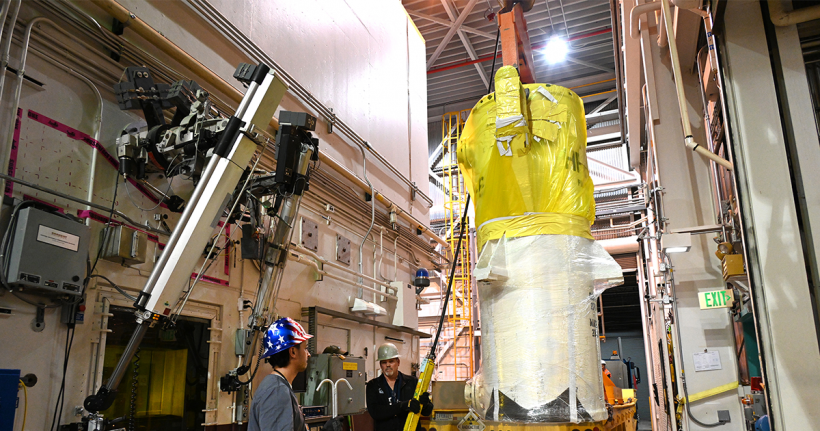
The US Department of Energy (DOE) has transferred all of the used nuclear fuel from the closed Experimental Breeder Reactor-II (EBR-II) from wet to dry storage. The target was achieved almost nine months ahead of schedule.
The transfer is one of several requirements DOE is obligated to meet under the Idaho Settlement Agreement it signed in 1995 with the state of Idaho, and the US Navy. The agreements support the clean-up and disposition of used fuel, along with high-level and transuranic radioactive legacy waste at the Idaho National Laboratory (INL) site.
DOE transferred more than 100 shipments of EBR-II sodium-bonded driver fuel from wet to dry storage as part of the agreement. Dr Kathryn Huff, Assistant Secretary for Nuclear Energy said: “We will continue to safely and effectively manage the site’s legacy waste to keep our promise with the citizens of Idaho.”
A portion of the EBR-II fuel is being treated to recover uranium products which could potentially be used as a source for high-assay low-enriched uranium (HALEU) material which is viewed as crucial fuel for the development and deployment advanced reactors, currently in the design stage. The HALEU will be used to support fuel qualification testing and DOE-supported advanced reactor demonstration projects.
EBR-II operated from 1964 to 1994 at Argonne National Laboratory-West. It generated power for the lab and supported reactor research and development projects. By 1996, the reactor’s used fuel was removed and placed into wet storage. DOE started transferring the fuel to dry storage in 2011.
Connie Flohr, manager of the DOE Office of Environmental Management (EM) Idaho Cleanup Project, said removal of the last elements in underwater storage “was a well-coordinated effort by our high-performing workforce and brings an end to a massive effort to safely transfer thousands of spent nuclear fuel elements from wet to dry storage over the past decade." According to EM, the wet storage basin at the Idaho Nuclear Technical & Engineering Centre (INTEC) is the largest used nuclear fuel storage basin in the world. Emptying it has taken more than two decades and has involved DOE's Office of Nuclear Energy and the Office of Naval Reactors Idaho Branch Office, with the support of five contracting companies.
The EBR-II was a sodium-cooled fast reactor designed, built and operated by Argonne National Laboratory at the National Reactor Testing Station in Idaho. It was shut down in 1994 and custody was transferred to Idaho National Laboratory after its founding in 2005.
Initial operations began in July 1964 and it achieved criticality in 1965 at a total cost of more than $32m ($275m in 2021 dollars). The original aim was to demonstrate a complete breeder-reactor power plant with on-site reprocessing of solid metallic fuel. Fuel elements enriched to about 67% uranium-235 were sealed in stainless steel tubes and removed when they reached about 65% enrichment. The tubes were unsealed and reprocessed to remove neutron poisons, mixed with fresh U-235 to increase enrichment, and placed back in the reactor.
Testing of the original breeder cycle ran until 1969, after which the reactor was used to test concepts for the Integral Fast Reactor (IFR) concept. The IFR programme was started in 1983, but funding was withdrawn by US Congress in 1994, three years before the intended completion of the programme. The EBR-II core was used for testing fuels and materials for future, larger, liquid metal reactors and in other experiments, until it was decommissioned in 1994.
The first phase of decommissioning activities, reactor de-fuelling, was completed in December 1996. From 2000, the coolants were removed and processed. This was completed in March 2001. The third and final phase was placement of the reactor and non-reactor systems in a radiological and industrially safe condition. Between 2012 and 2015, some components of the below-ground reactor were removed. The basement with the reactor was filled with grout. The large concrete dome that surrounds the EBR-II reactor was to be removed but
plans were changed in 2018. Instead, a new floor was poured and the dome repainted. The building will be used for a research facility on top of the entombed reactor. The dome is an integral part of the tomb along with a "Site-Wide Long-Term Management and Control Program".